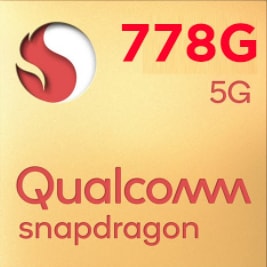Qualcomm Snapdragon 778G vs Qualcomm Snapdragon 7 Gen 3
We’ve conducted a comprehensive side-by-side comparison between the latest
Snapdragon 778g and Snapdragon 7 Gen 3
SoCs, from
Qualcomm and Qualcomm respectively. Our
analysis delves into the performance of these
8-core processors, based on
Geekbench, Antutu, and 3DMark
benchmark results, providing
detailed technical comparisons.
Review
General comparison of performance, power consumption,
and other
indicators
CPU Performance
Evaluation of Single-Core and
Multi-Core Processor Performance
Gaming Performance
Gaming and OpenCL/Vulkan
Performance of the Graphics Processing Unit (GPU)
Battery life
Energy Efficiency in Battery Usage
Tech Insist Score
Overall Performance Rating of the
Chip
Key Differences
Main differences and advantages of each chip
Pros of Snapdragon 7 Gen 3
Benchmarks
Evaluating performance through competitive testing in
leading benchmarks.
AnTuTu 10
The AnTuTu Benchmark evaluates CPU, GPU, RAM, and I/O
capabilities across various scenarios.
CPU
161744
256787
GPU
156423
272332
Memory
90737
177778
UX
131554
159966
Total score
540458
866863
GeekBench 6
The GeekBench test shows raw single-threaded and
multithreaded CPU
performance
3DMark
A cross-platform benchmark that assesses graphics
performance in Vulkan
(Metal)
3DMark Wild Life Performance
Stability
98%
-
Graphics test
14 FPS
-
Score
2468
-
Specifications
Full list of technical specifications of Snapdragon 778g and Dimensity
9300
Architecture
1x 2.4 GHz – Kryo 670 Prime (Cortex-A78)
1x 2.63 GHz – Cortex-A715
Cores
8
8
Base Frequency
1900MHz
1800MHz
Turbo Frequency
2400MHz
2630MHz
Instruction set
ARMv8.4-A
ARMv8.6-A
L2 cache
-
-
L2 cache
2 MB
-
L3 cache
-
-
Process
6 nanometers
4 nanometers
Transistor count
-
-
TDP (Sustained Power Limit)
5 W
6 W
GPU name
Adreno 642L
Adreno 720
Architecture
Adreno 600
Adreno 700
GPU frequency
490 MHz
-
Pipelines
2
-
Shading units
384
-
Total shaders
768
-
FLOPS
684 Gigaflops
-
Vulkan version
1.1
1.3
OpenCL version
2.0
2.0
DirectX version
12
-
Neural processor (NPU)
Hexagon 770
Yes
Memory type
LPDDR5
LPDDR5
Memory frequency
3200 MHz
3200 MHz
Bus
-
-
Max bandwidth
25.6 Gbit/s
25.6 Gbit/s
Max size
16 GB
16 GB
Storage type
UFS 3.0, UFS 3.1
UFS 3.1
Max display resolution
2520 x 1080
3360 x 1600
Max camera resolution
1x 192MP, 2x 36MP
1x 200MP
Video capture
4K at 30FPS
4K at 60FPS, 1K at 120FPS
Video playback
4K at 30FPS
4K at 60FPS, 1080p at 120FPS
Video codecs
H.264, H.265, VP8, VP9
H.264, H.265, VP8, VP9
Audio codecs
AAC, AIFF, CAF, MP3, MP4, WAV
AAC, AIFF, CAF, MP3, MP4, WAV
Modem
X53
Snapdragon X63
4G support
LTE Cat. 24
LTE Cat. 18
5G support
Yes
Yes
Download speed 5G
Up to 3700 Mbps
Up to 5000 Mbps
Download speed 4G
Up to 1200 Mbps
-
Upload speed 5G
Up to 2900 Mbps
Up to 1600 Mbps
Upload speed 4G
Up to 210 Mbps
-
Wi-Fi
6
6
Bluetooth
5.2
5.3
Navigation
GPS, GLONASS, Beidou, Galileo, QZSS, NAVIC
GPS, GLONASS, Beidou, Galileo, QZSS, NAVIC

